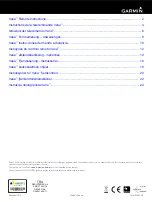
User's Guide HDSPe MADI
© RME
71
30.6 SteadyClock
The SteadyClock technology of the HDSPe MADI guarantees an excellent performance in all
clock modes. Its highly efficient jitter suppression refreshes and cleans up any clock signal, and
provides it as reference clock at the word clock output.
Usually a clock section consists of an analog PLL for external synchronization and several
quartz oscillators for internal synchronisation. SteadyClock requires only one quartz, using a
frequency not equalling digital audio. Latest circuit designs like hi-speed digital synthesizer,
digital PLL, 100 MHz sample rate and analog filtering allow RME to realize a completely newly
developed clock technology, right within the FPGA at lowest costs. The clock's performance
exceeds even professional expectations. Despite its remarkable features, SteadyClock reacts
quite fast compared to other techniques. It locks in fractions of a second to the input signal,
follows even extreme varipitch changes with phase accuracy, and locks directly within a range
of 25 kHz up to 200 kHz.
SteadyClock has originally been de-
veloped to gain a stable and clean
clock from the heavily jittery MADI data
signal. The embedded MADI clock
suffers from about 80 ns jitter, caused
by the time resolution of 125 MHz
within the format. Common jitter values
for other devices are 5 ns, while a very
good clock will have less than 2 ns.
The picture to the right shows the
MADI input signal with 80 ns of jitter
(top graph, yellow). Thanks to Steady-
Clock this signal turns into a clock with
less than 2 ns jitter (lower graph, blue).
The other input sources of the HDSPe
MADI, word clock, Video and LTC,
gain a lot from SteadyClock as well. In
fact, extracting a low jitter clock from
LTC is not possible without a Steady-
Clock similar technique at all!
The screenshot to the right shows an
extremely jittery word clock signal of
about 50 ns jitter (top graph, yellow).
Again SteadyClock provides an ex-
treme clean-up. The filtered clock
shows less than 2 ns jitter (lower
graph, blue).
The cleaned and jitter-freed signal can
be used as reference clock for any
application, without any problem.
Summary of Contents for HDSPe MADI
Page 5: ...User s Guide HDSPe MADI RME 5 User s Guide HDSPe MADI General ...
Page 33: ...User s Guide HDSPe MADI RME 33 User s Guide HDSPe MADI Connections and TotalMix ...
Page 40: ...40 User s Guide HDSPe MADI RME ...
Page 62: ...62 User s Guide HDSPe MADI RME ...
Page 63: ...User s Guide HDSPe MADI RME 63 User s Guide HDSPe MADI Technical Reference ...


































